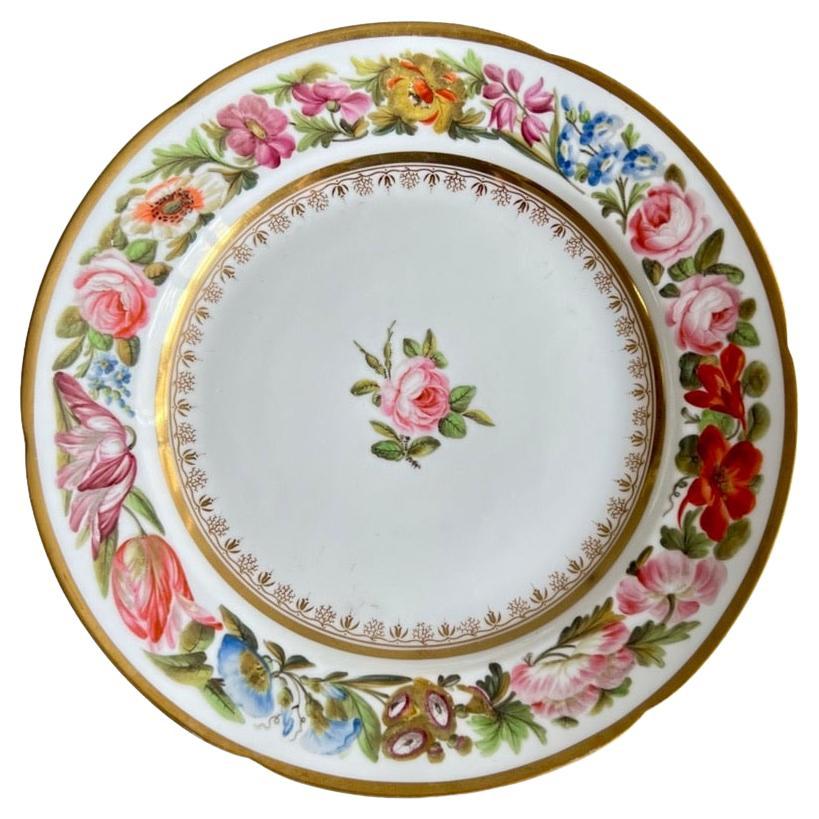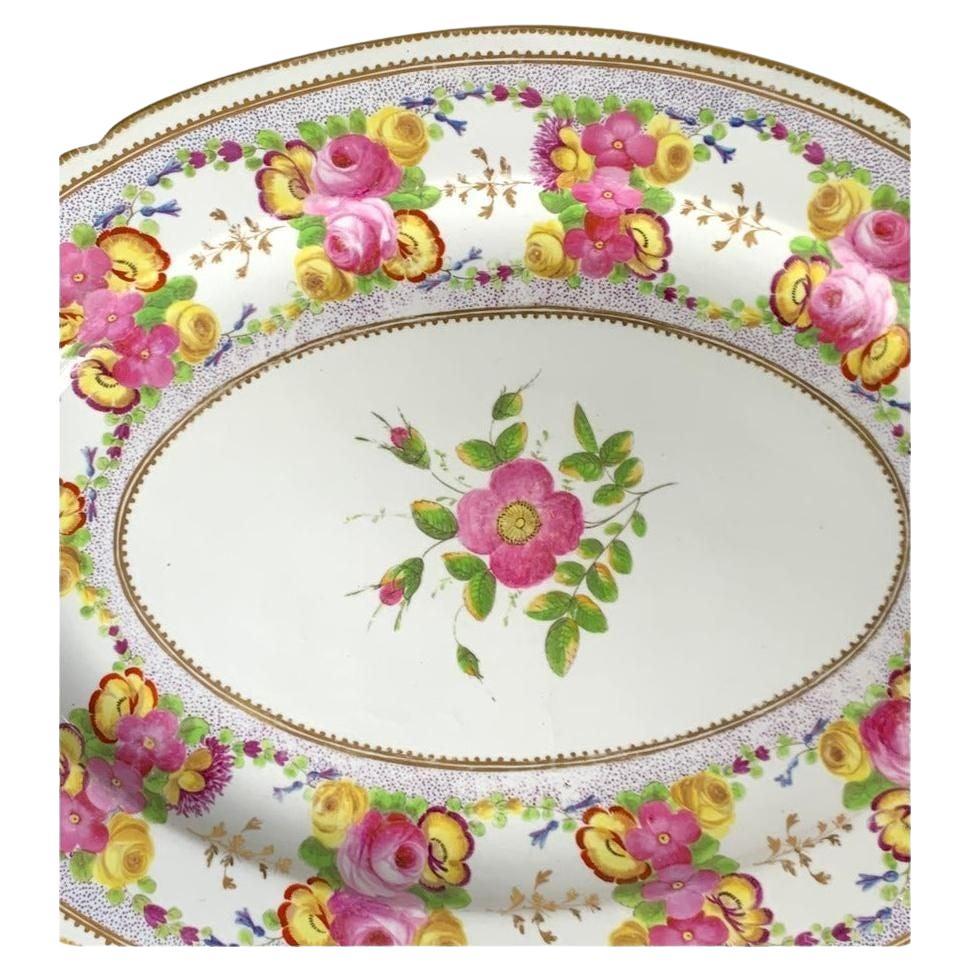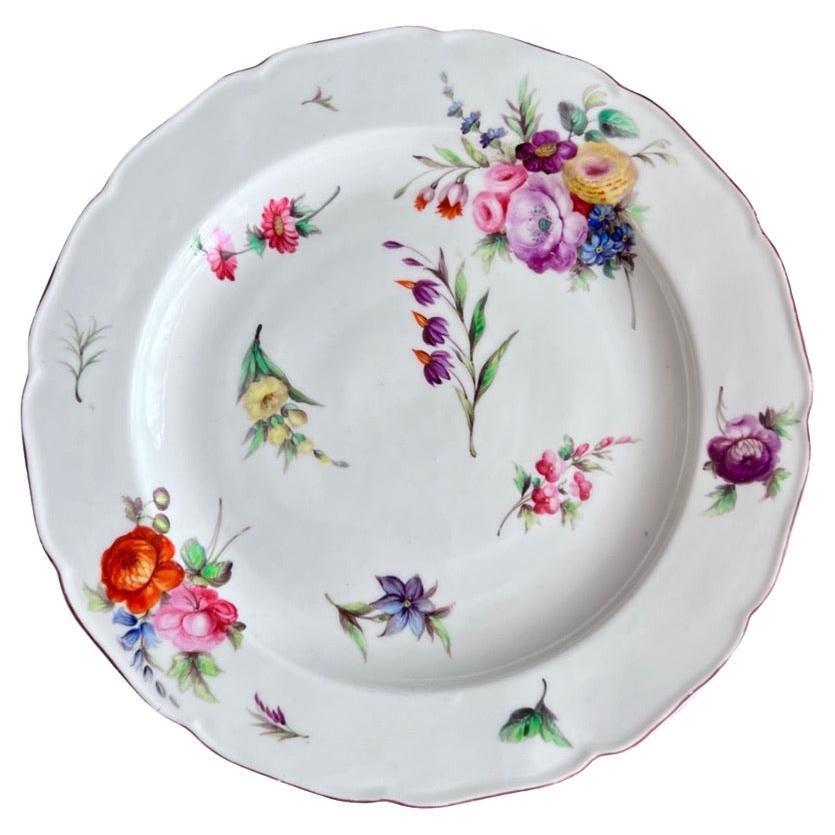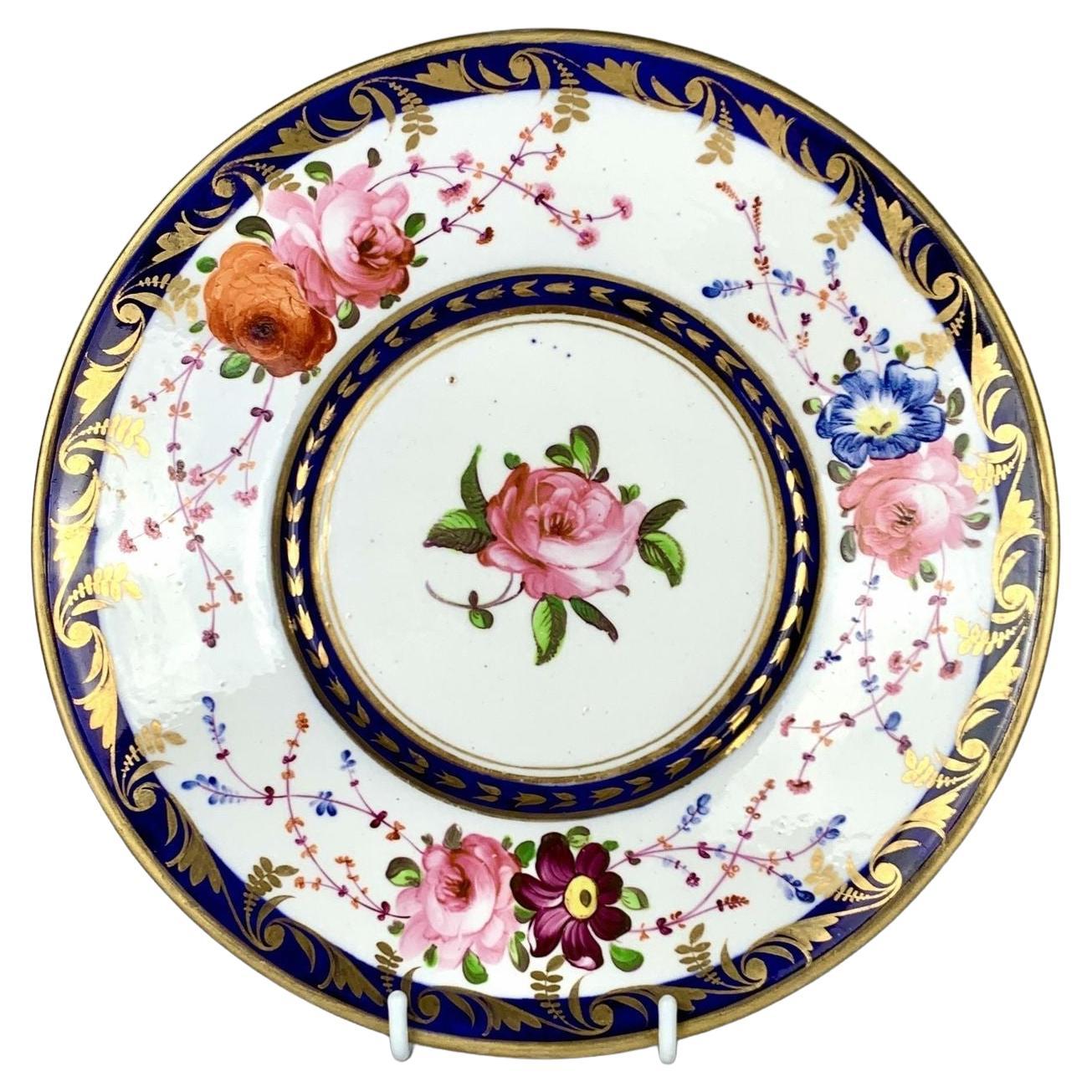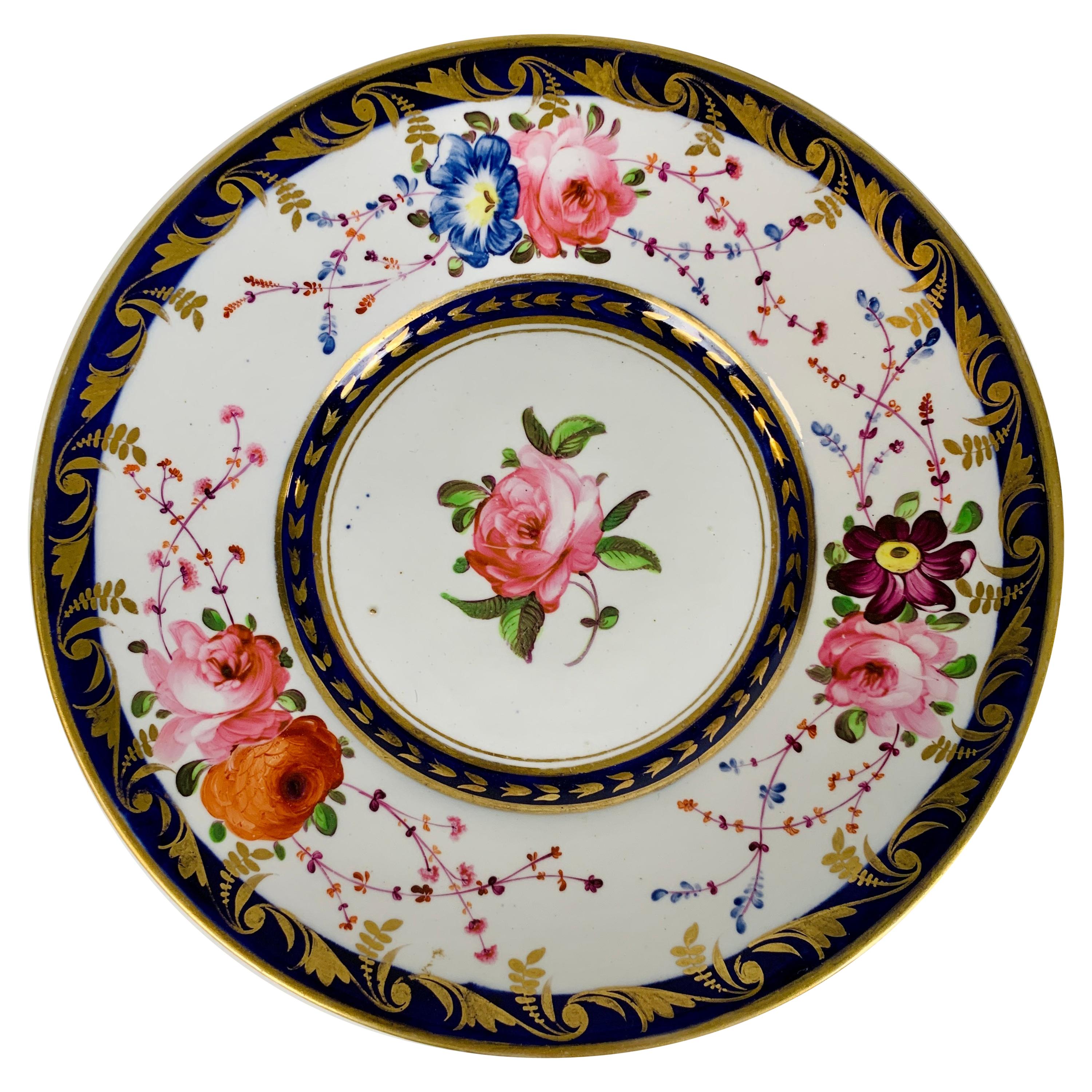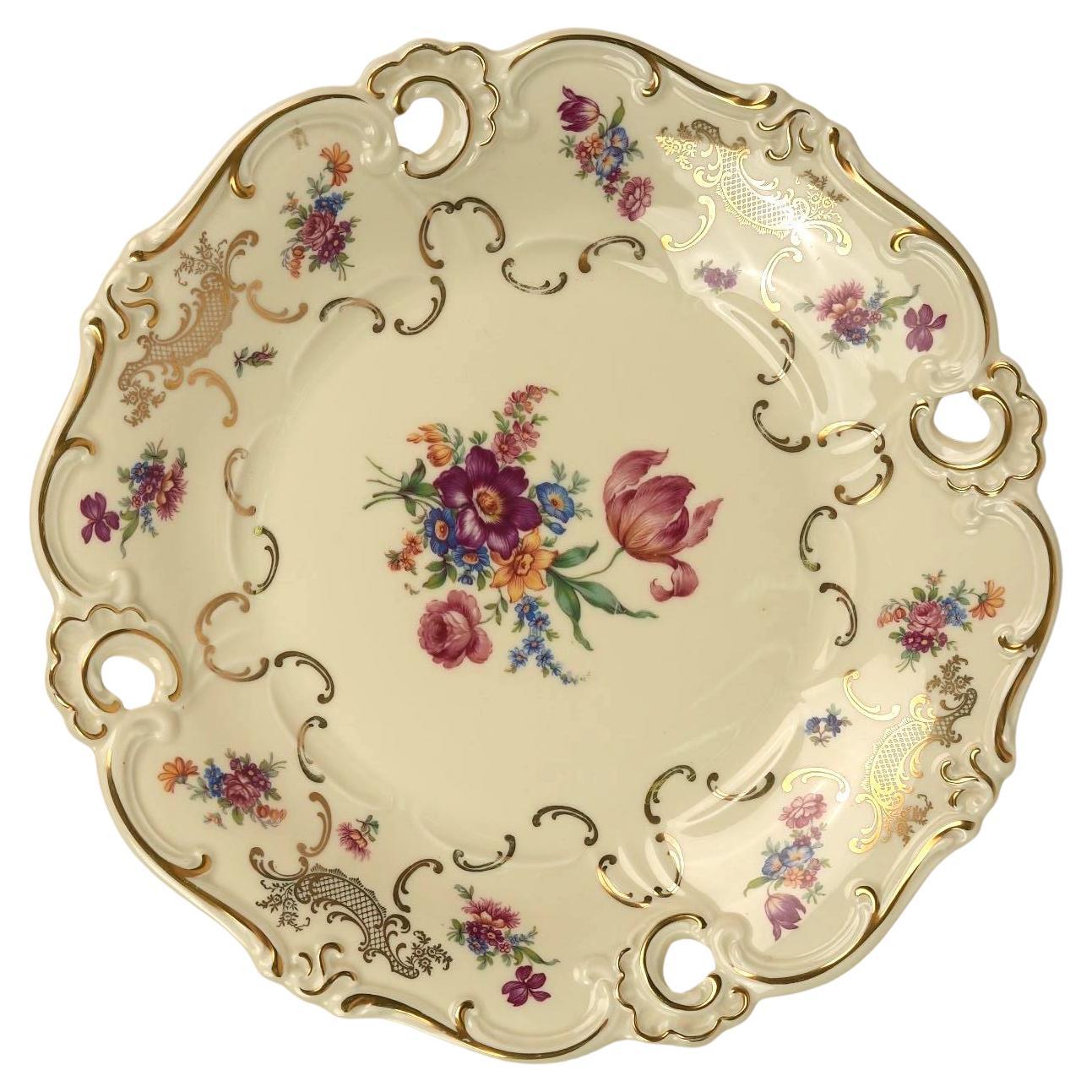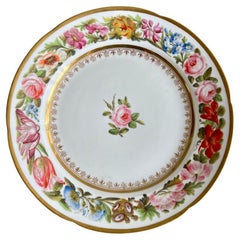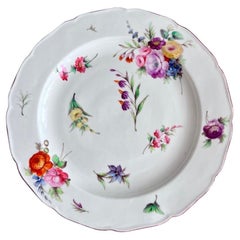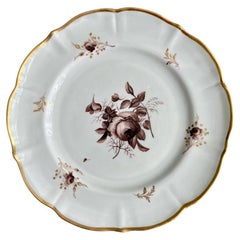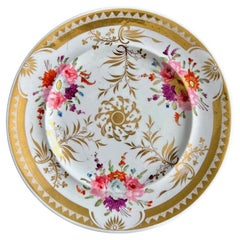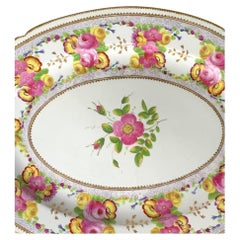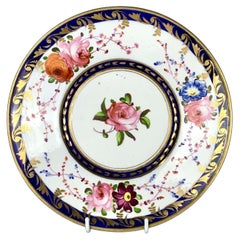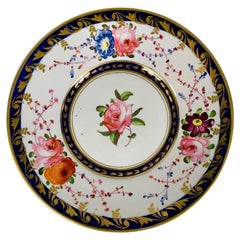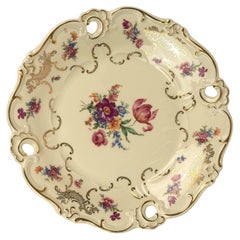Items Similar to Coalport John Rose Plate, Abundant Flowers, T. Baxter Studio, ca 1805 (2)
Want more images or videos?
Request additional images or videos from the seller
1 of 16
Coalport John Rose Plate, Abundant Flowers, T. Baxter Studio, ca 1805 (2)
$1,950
£1,466.24
€1,702.66
CA$2,723.13
A$3,020.16
CHF 1,586.04
MX$37,089.68
NOK 20,077.74
SEK 18,933.58
DKK 12,703.74
Shipping
Retrieving quote...The 1stDibs Promise:
Authenticity Guarantee,
Money-Back Guarantee,
24-Hour Cancellation
About the Item
This is a stunning and extremely rare plate made by Coalport around the year 1805, and decorated in the London studio of Thomas Baxter.
We have one more of these plates in stock, please see separate listing.
Coalport was one of the leading potters in 19th and 20th Century Staffordshire. They worked alongside other great potters such as Spode, Davenport and Minton, and came out with many innovative designs. When we say "Coalport" we usually think of the one Coalport factory that became famous, but in its beginning years there were two factories, one run by John Rose and the other by his brother Thomas Rose. Thomas Rose went into partnership with Robert Anstice and Robert Horton and they were located directly opposite John Rose, across the canal. The brothers' factories had much in common with each other and they shared many different shapes and patterns. Ultimately, the John Rose factory proved more profitable and John Rose bought Thomas' factory in 1814, making it the one Coalport factory that became so famous. Many of the Coalport items, of either factory, are now collectors' items.
This plate was painted in the studio of the famous porcelain painter Thomas Baxter (1782-1821). Although the painting on this plate is probably not from Baxter's hand, it was painted in his style, probably under his direct guidance. Baxter was the son of a porcelain painting family and learned the basics from his father, who ran a studio in London. He later ran his own studio and art school, becoming a well-known teacher of porcelain painting, and he was employed at various times by the Worcester and Swansea potteries, where he painted many top pieces. He also became very well-known for a beautiful dinner service he painted for Lord Nelson, who became his patron and commissioned many pieces from him. Unfortunately Baxter died young in 1821 at the age of 39, but he left behind an impressive output of wonderful pieces, as well as many pieces painted by others under his guidance.
The plate would have been part of a large dessert service. It was potted in early bone china - not as smooth as it was to become only a few years later when recipes improved, and with many little blemishes. The plate is decorated with a stunning pattern of an abundant floral rim, with a very fine gilt motif on the inner rim and a simple gilt band on the outer rim.
The plate is unmarked, as was usual in those days.
CONDITION REPORT The plate is in perfect antique condition without any damage, crazing or repairs, and negligible rubbing.
Antique British porcelain is never perfect. Kilns were fired on coal in the 1800s, and this meant that china from that period can have some firing specks from flying particles. British makers were also known for their experimentation, and sometimes this resulted in technically imperfect results. Due to the shrinkage in the kiln, items can have small firing lines or develop crazing over time, which should not be seen as damage but as an imperfection of the maker's recipes, probably unknown at the time of making. Items have often been used for many years and can have normal signs of wear, and gilt can have signs of slight disintegration even if never handled. I will reflect any damage, repairs, obvious stress marks, crazing or heavy wear in the item description but some minor scratches, nicks, stains and gilt disintegration can be normal for vintage items and need to be taken into account.
There is widespread confusion on the internet about the difference between chips and nicks, or hairlines and cracks. I will reflect any damage as truthfully as I can, i.e. a nick is a tiny bit of damage smaller than 1mm and a chip is something you can easily see with the eye; a glazing line is a break in the glazing only; hairline is extremely tight and/or superficial and not picked up by the finger; and a crack is obvious both to the eye and the finger. Etcetera - I try to be as accurate as I can and please feel free to ask questions or request more detailed pictures!
DIMENSIONS 23cm (9") diameter
- Creator:Thomas Baxter (Artist),Coalport Porcelain (Maker)
- Dimensions:Height: 0.75 in (1.91 cm)Diameter: 9 in (22.86 cm)
- Style:George III (Of the Period)
- Materials and Techniques:
- Place of Origin:
- Period:
- Date of Manufacture:circa 1805
- Condition:Wear consistent with age and use. In perfect antique condition without damage, repairs or crazing, and negligible rubbing.
- Seller Location:London, GB
- Reference Number:Seller: HP-COA10b1stDibs: LU4805141618792
About the Seller
5.0
Gold Seller
Premium sellers maintaining a 4.3+ rating and 24-hour response times
Established in 2016
1stDibs seller since 2019
225 sales on 1stDibs
Typical response time: 2 hours
- ShippingRetrieving quote...Shipping from: London, United Kingdom
- Return Policy
Authenticity Guarantee
In the unlikely event there’s an issue with an item’s authenticity, contact us within 1 year for a full refund. DetailsMoney-Back Guarantee
If your item is not as described, is damaged in transit, or does not arrive, contact us within 7 days for a full refund. Details24-Hour Cancellation
You have a 24-hour grace period in which to reconsider your purchase, with no questions asked.Vetted Professional Sellers
Our world-class sellers must adhere to strict standards for service and quality, maintaining the integrity of our listings.Price-Match Guarantee
If you find that a seller listed the same item for a lower price elsewhere, we’ll match it.Trusted Global Delivery
Our best-in-class carrier network provides specialized shipping options worldwide, including custom delivery.More From This Seller
View AllJohn Rose Coalport Plate, Abundant Flowers, T. Baxter Studio, ca 1805 (1)
By Thomas Baxter, Coalport Porcelain
Located in London, GB
This is a stunning and extremely rare plate made by Coalport around the year 1805, and decorated in the London studio of Thomas Baxter.
We have one more of these plates in stock, pl...
Category
Antique Early 1800s English George III Porcelain
Materials
Porcelain
Worcester Porcelain Plate, Flower Sprays by James Giles, ca 1770
By James Giles, 1st Period Worcester Dr. Wall
Located in London, GB
This is a beautiful large plate made by Worcester in about 1770 in their First or the "Dr Wall" period. The plate has a pleasing slightly lobed rim, a white ground and beautifully pa...
Category
Antique 1770s English George III Porcelain
Materials
Porcelain
Mansfield Porcelain Plate, Monochrome Sepia Rose W. Billingsley, 1799-1802 (1)
By William Billingsly
Located in London, GB
This is one of a pair of beautiful plates made by William Billingsley at the Mansfield Pottery, between 1799 and 1802. The plates, manufactured by Coalport, have a pleasing slightly diapered shape. They were decorated with beautiful monochrome sepia flowers and a simple gilt rim by William Billingsley.
Please see separate listing for the matching plate; I would be happy to offer some discount if you interested in purchasing both plates.
William Billingsley was a brilliant but notoriously difficult man who left behind a trail of debts, broken hearts and mystery - but he was also one of the most important people in the history British porcelain. Billingsley revolutionised the way British decorators painted flowers; he added a freedom and artistry that now singles out British flower painting, and he created a new technique for painting roses, which you can see in this design. Billingsley trained and worked at Derby, and then started his own pottery at Pinxton. He then left to start a decorating studio at Mansfield, where he decorated wares from various potteries, among which Derby, Coalport, Whitehead and others. After that, he spent a period in Worcester, and then went to Wales where he set up a pottery in Nantgarw, worked at the Swansea pottery for a while and then returned to Nantgarw. While in Nantgarw he created some of the best porcelain ever made, but racking up great debts. He ended up running off in the dead of night and ending his days at Coalport painting flowers.
Items painted by William Billingsley are rare and very much in demand - together with Thomas Baxter's work they are probably among the most desired pieces of British porcelain.
The plate is marked with an impressed 7, the number associated with Billingsley. The attribution of this plate to William Billingsley is due to the fact that he painted nearly identical flowers on a Coalport jug...
Category
Antique Early 1800s English George III Porcelain
Materials
Porcelain
Yates Plate, White, Gilt Shark Teeth Pattern and Floral Reserves, ca 1825
By William Yates
Located in London, GB
This is beautiful plate made by the Yates factory in about 1825. The plate is decorated with in a white ground with finely hand painted flower reserves, gilt sprigs and a characteris...
Category
Antique 1820s English Regency Porcelain
Materials
Porcelain
$304 Sale Price
20% Off
Free Shipping
Flight Barr & Barr Berry Bowl, Roses and Thistles by W. Billingsley, 1813
By Barr, Flight & Barr Worcester, Flight, Barr & Barr Worcester, William Billingsly
Located in London, GB
This is a beautiful berry bowl made by Flight Barr & Barr probably in the year 1813. The dish is decorated with a beautiful continuous border of hand painted roses and thistles by th...
Category
Antique 1810s English Regency Porcelain
Materials
Porcelain
Derby Oval Dish, Camden Service, William Billingsley Roses on Green, 1795 (2)
By Derby
Located in London, GB
This is a very rare oval lobed dish from the famous "Earl of Camden" service made by the Derby Porcelain Company in 1795. The service was painted with typical English roses by William Billingsley, one of Britain's most famous painters, and responsible for exactly this type of rose painting on British porcelain.
There are more items available in this pattern, see separate listings. To keep these items together we'd be happy to offer a discount on multiple purchases - please ask!
The Derby Porcelain Company, later called Royal Crown Derby, is currently the oldest British porcelain factory still in production. The Derby pottery was one of the most prominent potteries right from the start of English porcelain production in the mid 1700s to today, and the factory went through many iterations. In the 1820s, it was called "Bloor Derby" as it came under the ownership of Robert Bloor; this factory later closed but its legacy was continued under the ownership of a group of employees, and later this was merged into a new factory called Royal Crown Derby, which is still in operation today and still carries forward some of the oldest patterns that have made it famous over the centuries.
William Billingsley was a brilliant but notoriously difficult man who left behind a trail of debts, broken hearts and mystery - but he was also one of the most important people in the history British porcelain. Billingsley revolutionised the way British decorators painted flowers; he added a freedom and artistry that now singles out British flower painting, and he created a new technique for painting roses, which you can see in this design. Billingsley worked at Derby, Worcester and Mansfield. He also set up his own potteries in Pinxton and Nantgarw and created some of the best porcelain ever made, but racking up great debts, before running off in the dead of night and ending his days at Coalport painting flowers.
Items painted by William Billingsley are rare and very much in demand - together with Thomas Baxter's work they are probably among the most desired pieces of British porcelain.
The Earl of Camden service was a huge service ordered by Lady Camden in 1795. It had to be produced under great, and unrealistic, time pressure and was notoriously late, much to Lady Camden's chagrin. She wanted the service to be produced by only the best artisans and therefore William Billingsley was tasked with painting all items - but it is thought that when it was clear the deadline was impossible to make, he enlisted the help of John Brewer for some of the last items, such as the ice pails. This plate shows the typical "Billingsley" roses: a beautiful naturally flowing garland of English roses interspersed with buds, trailing around a crisp gilt ribbon. The way the roses link into each other, the way each individual one is completely different, the light effects achieved by rubbing out some of the pink paint, and the very fine buds and foliage all point to these being from Billingsley's hand.
This dish came together with a plate that bears labels that point to a rich provenance: the Doris Wheatley Collection, the Daniel Collection, Derek Gardner...
Category
Antique 1790s English George III Serving Bowls
Materials
Porcelain
You May Also Like
Antique Coalport Porcelain Platter Hand Painted Floral England Circa 1825
By Coalport Porcelain
Located in Katonah, NY
This antique porcelain platter was made by Coalport in England around 1825.
It is hand-painted with vivid floral sprays in shades of pink, yellow, and purple, centered within an oval...
Category
Antique Early 19th Century Regency Platters and Serveware
Materials
Porcelain
Antique Porcelain Dish Pink Roses Hand Painted England Circa 1820
By Coalport Porcelain
Located in Katonah, NY
This exquisite antique porcelain dish was hand painted at Coalport Porcelain in England circa 1820.
It is a piece of artistry that has gracefully withstood the test of time.
The dish...
Category
Antique Early 19th Century English Regency Decorative Dishes and Vide-Poche
Materials
Porcelain
Antique English Porcelain Dish Made in England Circa 1820 Decorated with Roses
By Staffordshire
Located in Katonah, NY
A delightful English porcelain dish made circa 1820 hand-painted with exquisite flowers on crisp white porcelain.
In the center is a lovely pink rose. Other roses, forget me nots, an...
Category
Antique Early 19th Century English Regency Decorative Dishes and Vide-Poche
Materials
Porcelain
Rosenthal Molière Porcelain Platter with Floral and Gilt Detail
By Rosenthal, Jacob & Co (J. Rosenthal & S. Jacob)
Located in Worcester Park, GB
This vintage Rosenthal Molière porcelain platter is a stunning example of mid-century European fine china that balances ornamental charm with delicate craftsmanship. What makes this ...
Category
Mid-20th Century German Rococo Platters and Serveware
Materials
Porcelain
Nantgarw Porcelain Dinner Plate, c1820
By Nantgarw China Works
Located in Tunbridge Wells, GB
Nantgarw Porcelain Dinner Plate, c1820
Additional information:
Date : c1820
Period : George III/George IV
Marks : Impressed NANT-GARW C.W.
Origin : Nantgarw, South Wales
Colour : o...
Category
Antique 19th Century English George III Porcelain
Materials
Porcelain
Royal Grafton 'Malvern' Bone China Dinner Plate with Gilt Trim Set of 8
Located in Worcester Park, GB
This elegant vintage dinner plate by Royal Grafton features the charming ‘Malvern’ pattern—an exquisite design of multicolored floral sprays arranged aro...
Category
Early 20th Century English Romantic Platters and Serveware
Materials
Porcelain
More Ways To Browse
George Rose
Nelson Ceramics
George Iii Silver Service
Antique China Dinner Service
Mark Horton
Dior Fine China
Worcester Porcelain Service
Minton China Plate
Antique Davenport Plate
Spode Service
Coalport China
Coalport Chinese Porcelain
Minton Bone China
Spode Chinese Flowers
Antique Minton China Plates
Antique Chinese Dessert Plate
Antique Davenport China
Staffordshire Bone China
